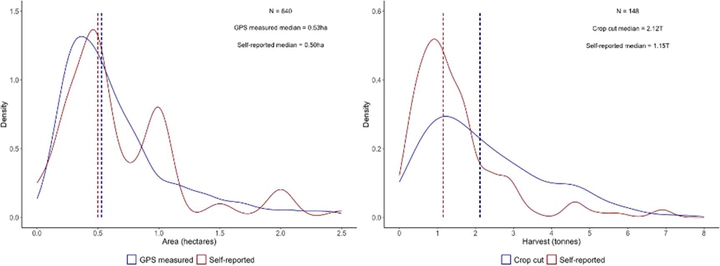What discrepancies between farmer perceptions and observational data teach us about smallholder decision making
 Farmer-reported vs GPS measured field area and farmer-reported vs crop cut estimated yield (harvest). Dotted lines represent the median values for each distribution
Farmer-reported vs GPS measured field area and farmer-reported vs crop cut estimated yield (harvest). Dotted lines represent the median values for each distributionAbstract
We pair survey responses with GPS, crop-cut and CHIRPS benchmarks for 640 maize fields in Zambia to ask what the gaps between farmer perceptions and observational data really tell us. We find that farmers systematically overstate the area of small plots and understate that of large ones, while yield reports display the opposite pattern—low-yielding fields are understated and high-yielding fields overstated, with pronounced digit-heaping on round numbers. Similar misalignments emerge for rainy-season length, where no single “objective” metric captures the heuristics farmers use to mark onset and cessation. We interpret these discrepancies not as random error but as products of mental shortcuts such as anchoring, availability and social desirability that substitute for seldom-needed measurements. Because such beliefs guide day-to-day decisions, “correcting” them with instruments can aggravate bias. Indeed, once we account for conceptual mismatch, the inverse farm-size–productivity relationship all but disappears. We therefore argue that progress lies less in replacing farmer voices with satellites and more in engaging how smallholders actually think.